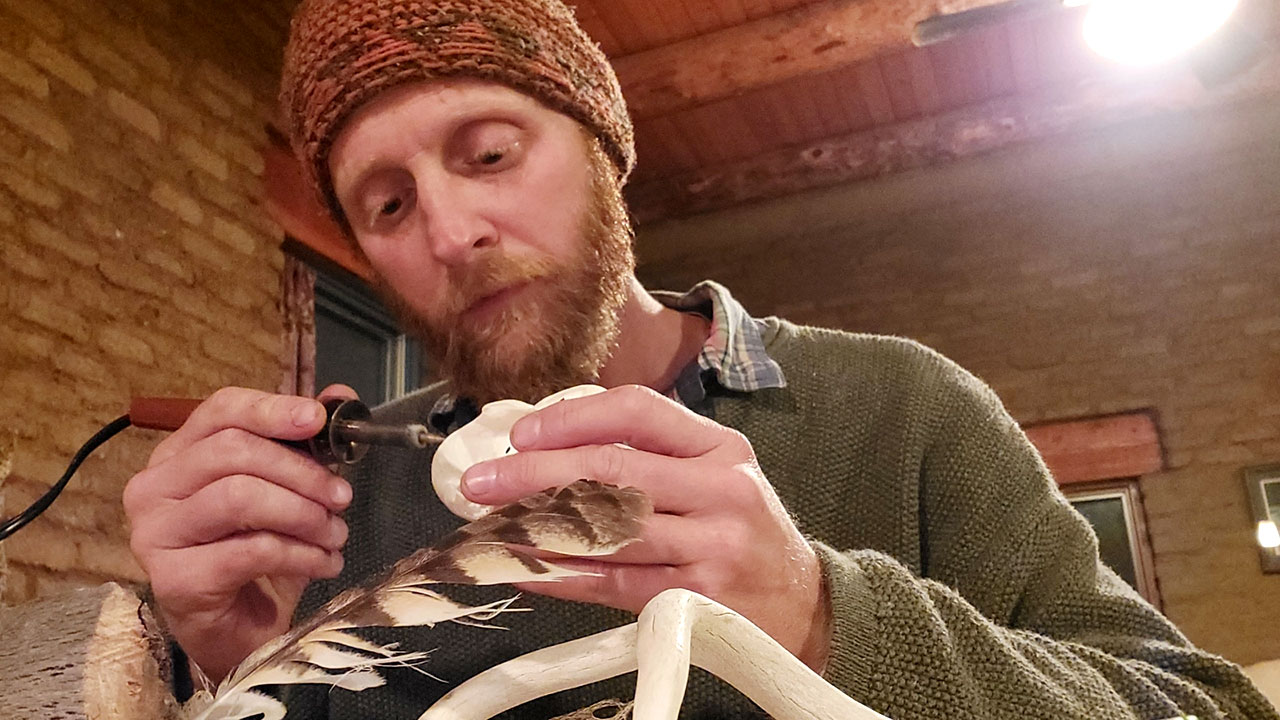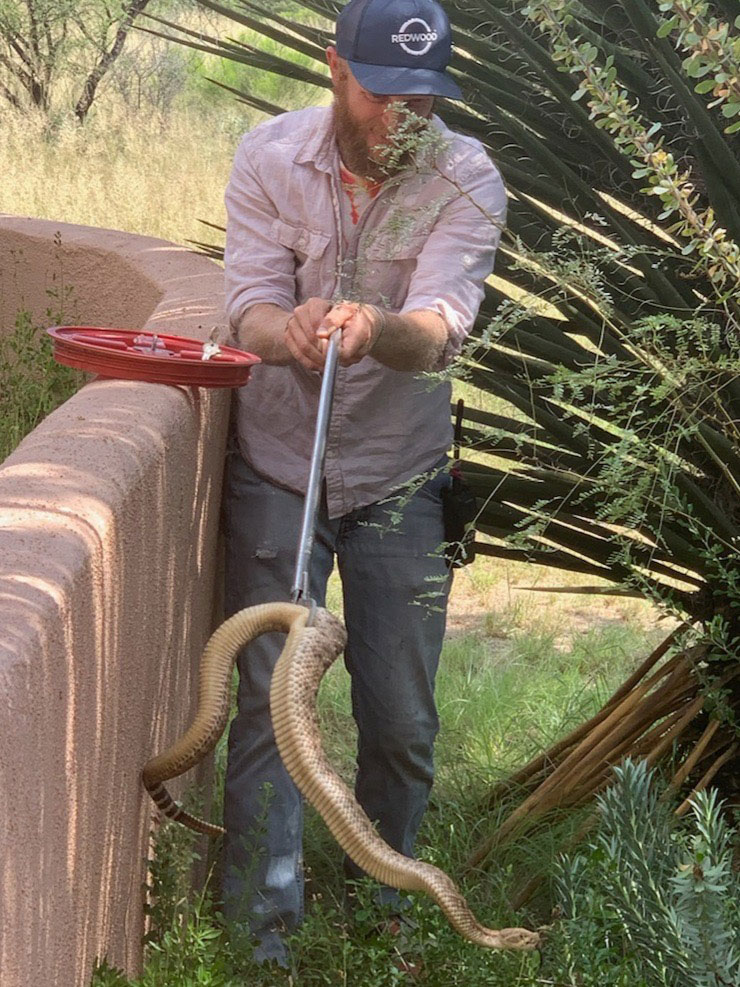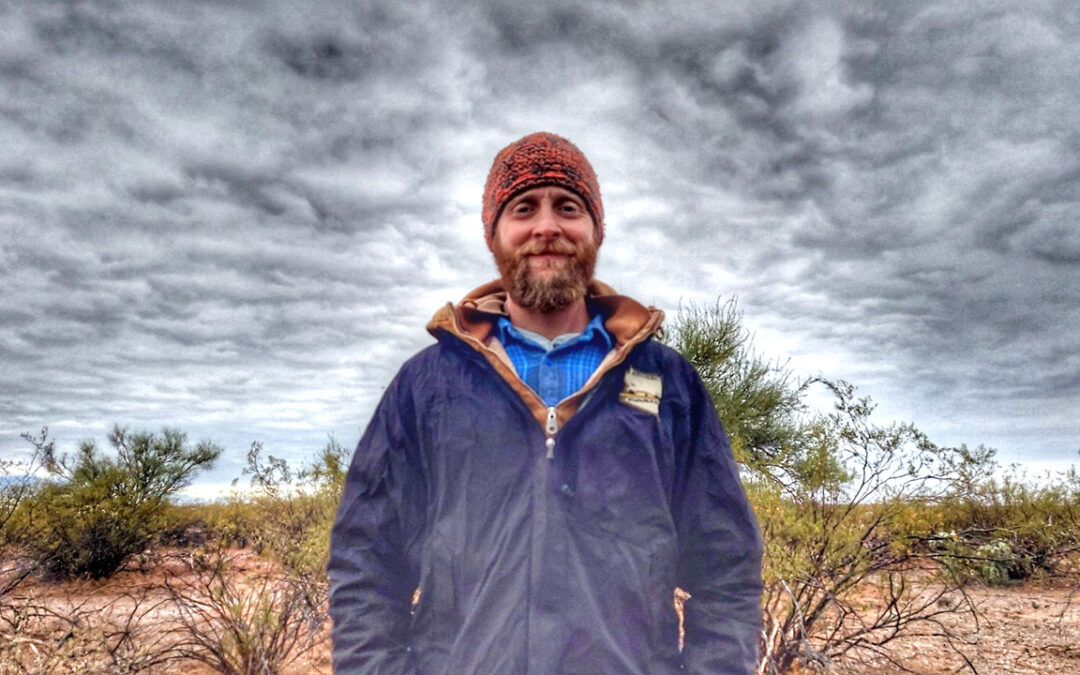MBC sponsor Eric Herman owner of AtoZec, wildlife biology consulting firm, in the field east of Tucson performing a native plant inventory.
Eric Herman is a Wildlife Biologist who works around the Southwestern United States. We spent some time with him to find out more about his work, how creativity helps him, what traits he associates with creativity and why he supports Mat Bevel Company. Read on to find out his answers.
How would you describe your work?
With my work, we have a plant or animal species that we’re looking for in the field. Before going into the field, I learn as much as I can about the science of the species, what’s its behavior, where and how do we find it.
The bulk of my work involves hiking through a variety of habitat looking for that species. That entails using your senses. Often it’s sight and sound.
You have to be patient, because literally I’m hiking all day and looking or staying in one spot waiting to see the species. Once we find the target species, we collect data. It’s a search and investigation mission that we’re on.
What role does creativity play in your work?
Things change in the field. Where you may have easily found a species before, may not be where you find that species now. That species may have moved away or still be present in limited numbers, making it hard to find. Issues arise and you have to be ready to respond to logistics, injuries, the species changing its behavior because of our presence.
The plants and animals do not read the books that we’ve written about them. They may do different things and be in different places than what we expect. The cliché “think outside the box” to me means creating alternatives to your standard search pattern. You have to be very creative to put yourself in the mind of an animal. How do they move? What are they looking for?
I ask myself, “What do I need as this bird or tortoise? What is my day like?” When you figure this out, it will help you find what you need rather than relying on a text book. I use my mind and my instinct to solve problems in the field.
Answering the why of a particular situation takes creativity. As a part of creativity, I use intuition all the time. I trust my feelings and my gut. Instinct is an immediate reaction. If those patch of trees look promising, pursue it. Trust it. That’s how I got good at looking for Yellow Billed Cuckoos. We found them in areas that weren’t in the textbooks.
In the end, creativity is not so much about the plants or the animals, but using the six senses! It helps me learn about myself. There’s a link between self-awareness and awareness of an environment in general. That’s where the sixth sense is so important. Intuition taps you into the energy of the habitat.

Eric Herman making found-object art from nature’s treasures.
What traits do you associate with creativity?
Let’s say you planned, but everything went south. A crew member is sick. The animals are acting differently. The habitat is different. The weather changed. You have to get creative.
Adaptability is a trait directly linked to creativity. How do you use original thinking to change your approach due changing situations? How do you adapt your survey to that? It might mean preparing how you get in and out of the canyon, or exiting before the weather turns bad. Adaptability all comes back to out-of-the-box thinking which opens you up to a wider range of options.
Another trait connected to creativity is trust which largely overlaps with instinct. This is a behavioral thing. It requires maintaining an optimistic thought. You have to be realistic too, knowing that trust doesn’t mean everything will turn out, but you keep the door open for things to work out.
Identify a positive and practical way that having creative capacity has improved your life and your work.
Creativity has given me more options and experiences. It allows my passion to grow and expand. For science based work, it helps me solve challenges, opening up more solutions, more answers.
Going back to the Yellow-Billed Cuckoo work, the creative thoughts have helped me find similar attributes of the species but in areas that have different vegetation. In this case, I identify more factors that might attract an animal to an area, such as prey…what they are going to eat here? Is there a food source in different places than previously defined?
Do you work your mind out to practice creativity?
Yes, I mentally shut the thoughts of my mind down and listen to what my six senses are telling me, with instinct as the sixth sense.
I also work on found-art object sculptures to create art. Throwing things together in ways that aren’t uniform increases my creativity. Running my mind and hands through the process of creation is very useful.

Eric is an EMT and wildland firefighter with Patagonia Volunteer Fire and Rescue. He also offers free snake relocation services.
What science concept do you use often in your work?
Patterns. We use the term search pattern which means I am almost thinking of anything I’ve learned. It’s heavy on instinct. Gazing across a scene, I let a sixth sense suck up what data is coming in. Often sight and sound patterns allow the mind to receive data and calculate in my head, “Is this the right area?” The patterns are coming in so fast but you’re picking up shapes, or colors that help cue you into to finding the species and its habitat.
Getting to the touch part…how will you move yourself through the given area. Is the best way to walk a straight line or shift your movement. If I walk a straight line I may miss the snake behind the rock.
The un-creative mind will stay on the straight line. The creative mind will follow the patterns which may mean deviating and curving my way through the environment. With this approach, I’ve seen many more species than I would have otherwise.
Why did you donate again to Mat Bevel Company this year?
I donated to Mat Bevel Company this year again because I know the people involved and I know their hearts are into the mission. I’m donating to the passion. When making a decision to donate, I ask myself, “How are they using the money?” With Beveldom, besides the actual construct…the art and science that are being taught through The Daily Doodle, The Time-Space machine, I’ve met Bevel and Kid Bevel, I know the passion! Passion is how I live.”
THANK YOU, ERIC!
